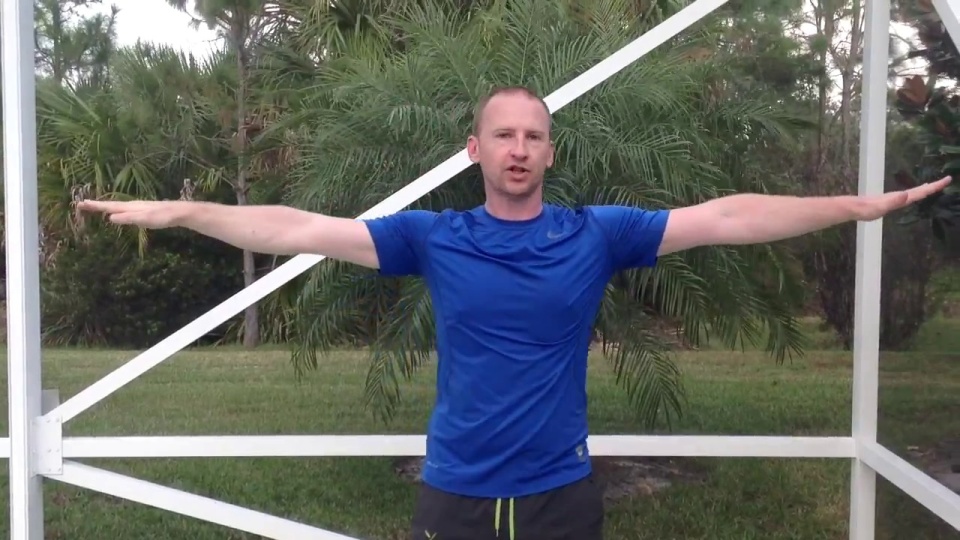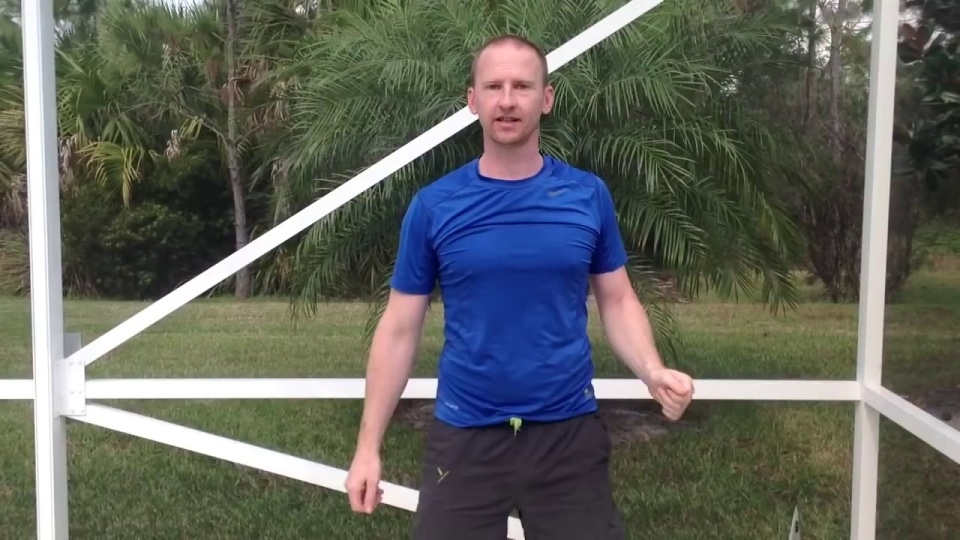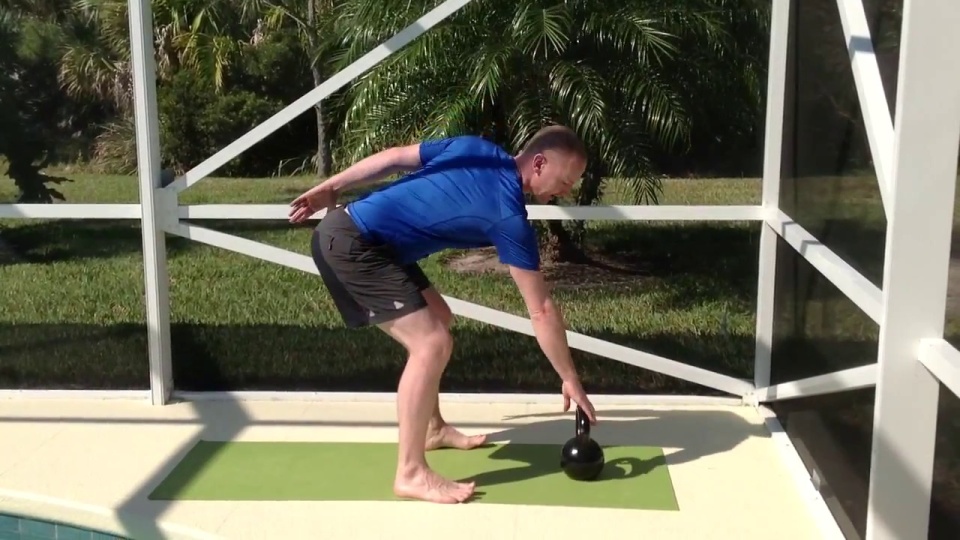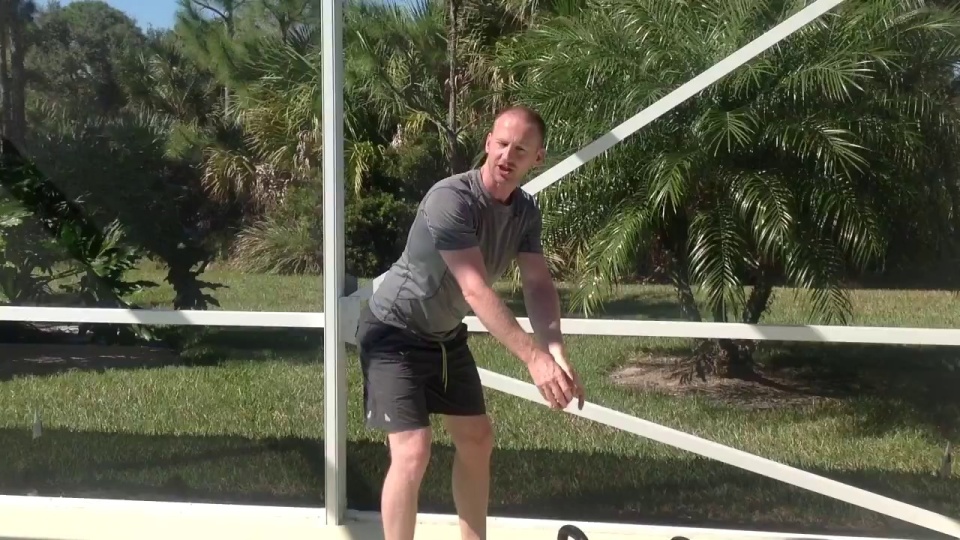BY GREG BROOKES
Kettlebell Snatch Overview
The final progression and the holy grail of full body exercises is the Kettlebell Snatch.You need to ensure you have an excellent Swing and have also mastered the Turkish Get Up before even contemplating this exercise.
Many people struggle to master the Snatch. It’s daunting having a heavy weight above the head and the speed at which it gets there can be off putting too. There are also timing issues necessary for the Snatch to avoid banging the wrists and jerking the arm.
The Kettlebell Snatch works the entire body from head to toe and is considered a pulling movement. Taking the kettlebell from the top position, absorbing the weight and then changing momentum at the bottom takes a lot of energy.
The kettlebell snatch is certainly a cardiovascular exercise although not as much as the High Pull because you can grab periods of rest at the top of the movement.
Watch a Quick Video of the Snatch:
5 Kettlebell Snatch Benefits
1– Huge Fat Loss Exercise
The snatch uses hundreds of muscles in just one movement. The more muscles you use the more energy required and subsequently the more carbohydrates and fat you burn. When it comes to fat burning the snatch is one of the most demanding exercises out there.
2 – Great Cardio without Moving Your Feet
If you want to really push your cardio then the snatch will really elevate your heart rate without the need to even move your feet. The snatch uses so much force and energy during every repetition that snatching a kettlebell gets the heart and lungs working very hard, very quickly.
3 – Develop Strength and Power
The snatch requires you to absorb and regenerate force at speed during every repetition. The ability to produce force at speed is what we call power. Power is very useful for many things but in particular for sports and martial arts. If you want to develop a competitive advantage in your sport then the snatch could help.
4 – Connect the Body
The one thing that the snatch does very well is connect the body from head to toe. The snatch takes the kettlebell from overhead to close to the floor and back again in a matter of seconds. The ability to connect movement patterns from head to toe is hugely beneficial for natural movement skills.
5 – Improves Stability and Mobility
In order to snatch the kettlebell the chest needs to open up and the shoulder needs to be supple enough to allow the kettlebell overhead. Poor shoulder and thoracic mobility will be highlighted during the snatch and demand attention. As well as being mobile the shoulders also need to be stable so they can support the heavy load overhead.
Muscles Used During the Snatch
There are not many muscles that are not used during the kettlebell snatch. The quads, hips, glutes, core and hamstrings are all certainly worked very hard just like with the Kettlebell Swing.
Unlike the swing you get a little more muscle activation at the top of the body due to the fact that the kettlebell goes overhead. The shoulders, arms, mid-back and upper back get worked well during the movement.
It is also important to note that the upper back (thoracic spine) will be opened upand the overhead shoulder mobility taken back. Poor shoulder and thoracic mobility could lead to problems but I’ll address that issue in a little while.

Once you start practicing the snatch, one area that you will notice gets worked hard is the grip. There are ways to take emphasis away from the gripping muscles, which I’ll reveal later, but bringing the weight down from the top position will certain test your grip strength.
The kettlebell snatch cannot be loaded as heavy as the swing and so for pure leg development the swing is slightly better
Similar to the swing the only area that does not get that much attention is the chest. So adding a push up to your snatch routine can be very beneficial.
4 Kettlebell Snatch Prerequisites
Before you attempt the kettlebell snatch it is vital that you have mastered a number of other kettlebell exercises first:
1– Kettlebell Swing
The swing develops a number of skills that are necessary for the snatch. The hip hinge is one of the most important components and enables you to drive the kettlebell upwards and absorb it on the way down. Also good shoulder stability will have been developed from the swing that will ensure that you keep your shoulder in its socket as you snatch.
You should have totally mastered the Swing with both 1 and 2 hands before attempting the Snatch
2 – Turkish Get Up
During the snatch the kettlebell is overhead and this requires both good shoulder stability and also mobility. The Turkish Get Up teaches good static stability and conditions the small stabilising muscles that are needed to maintain this top position.
The Turkish Get Up will also give you the confidence to hold a kettlebell safely overhead
3 – Kettlebell Experience, at Least 6 – 12 Months
I usually wait at least 6 months usually much longer before teaching the kettlebell snatch to clients and my kettlebell classes. There are far too many other kettlebell exercises that will generate huge results and are a lot less likely to cause injury.
Don’t progress too quickly, the snatch may look like a cool exercise but without a strong kettlebell training background they can be very destructive
4– Shoulder & Thoracic Mobility
Can you hold your arm overhead in line with your ears without leaning backwardsfrom the lower back?
Try standing with your back against a wall and reaching your arm overhead. Do you arch your back? Does your backside come off the wall? Does your shoulder feel tight?
When you snatch overhead your arm should end up straight overhead. If it cannot due to mobility issues then you risk injuring your lower back or shoulder joint due to compensations.

If your overhead mobility is not good then I suggest you work on improving this before you continue with the snatch or you’ll risk injury sooner than you think.
Work on these two drills to see if your mobility improves..
4 Steps to Mastering the Kettlebell Snatch
Once you have mastered the Swing, Turkish Get Up, been training for 6 – 12 monthsand have good Shoulder and Thoracic Mobility it’s time to begin.
Watch a tutorial video of the Kettlebell Snatch:
Step 1 – Master the High Pull Exercise
As you can see from the tutorial video above the snatch is a combination of the Swing, High Pull and Press. If you have not mastered the High Pull then go and practice that first.
Watch a tutorial video of the Kettlebell High Pull:
Step 2 – Begin from the Top Down
You will find it much easier to learn the snatch from the top position downwardsrather than the other way around.
Start by pressing the kettlebell overhead. Next, throw the kettlebell over and back down into the swing position. Stop at the bottom and begin the process again. Practice until the movement feels smooth and you are comfortable.
Step 3 – Snatch to Racked Position
Now you are going to attempt the first half of the snatch. Swing the kettlebell with one hand and then on the 3rd swing repetition high pull and push your hand through to the top position.
From the top position take the kettlebell straight down to the racked position and then down to the floor. Practice this on both sides until you feel very comfortable with the first part of the snatch.
Bring the kettlebell down from the top position as if coming down from an overhead press
Step 4 – Complete the full snatch exercise
Now all you need to do is put the first part of the snatch and the second part of the snatch together. Start with your dominant hand, usually the right, just to get to grips with the movement. Continue practicing until you can use both hands.
Don’t overwork the snatch at the beginning, just practice 10 – 20 reps per day with a comfortable weight
Quick Snatch Technique Overview
- Hold the kettlebell handle by the inside corner
- Start as with a Swing but keep the kettlebell close as if facing a wall
- At chest height pull the kettlebell towards you and then push the hand up and through
- Don’t wait for the bell to flop over, beat it around
- From the top position flip the kettlebell over leading with the elbow, keep the kettlebell close
- Absorb the kettlebell weight at the bottom as with a Swing and repeat
- The only time the arm is straight is at the top and bottom
- Use snapping hips for power as with the Swing
You will find performing the Kettlebell Snatch is tough on the hands and rolls the skin. Chalk will make this worse. Look after your hands and address all calluses. Changing hands during the exercise will help to improve forearm endurance.
Changing Hands During the Snatch
One of the great properties of the snatch, like the Swing, is the ability to dynamically move from left hand to right hand without having to put the kettlebell down.
To avoid injury you should always try and change hands by using the one handed swing exercise. So you may snatch the kettlebell a number of times and then move into the one handed swing in order to change hands.
Watch this video on changing hands:
6 Common Kettlebell Snatch Mistakes and How to Fix Them
1– Craning the neck
At the overhead position keep your chin back, don’t push it forwards or you risk injuring your cervical spine. If you struggle keeping your chin back then you probably need to address your shoulder and thoracic mobility as mentioned earlier.
2 – Keeping the arm straight
If you do not bend your arm and just continue the swing all the way over the top you will bang your wrist and forearm with the kettlebell. You must bend your arm in order to straighten it at the top.
3 – Trying to move the kettlebell around the hand
Another reason for wrist and forearm damage is usually down to bad timing at the top of the movement. Timing is everything at the top part of the snatch. Ensure you take your hand around the kettlebell rather than trying to move the kettlebell around your hand.
4 – Being pulled forwards
Often as the kettlebell is thrown forwards there is a tendency to let the kettlebell pull you forwards with it. Keep your weight on your heels and load the powerful muscles at the back of the body. If you feel your weight moving towards your toes then you know that you need to load the rear of the body more.
5 – Not Snatching far enough backwards
It is very common to stop the snatch before the overhead position. It is important to open up the chest at the top and finish the movement with the kettlebell overhead. The kettlebell should form a straight line from the top position, down and through the body.

If you stop the kettlebell too short then the shoulders will get tired very quickly because you are not providing a rest at the top of the movement. If you cannot take the kettlebell all the way back then be careful, you probably have shoulder or thoracic mobility issues.
6 – Shoulder not down in its socket
The safest place for your shoulder is down and in it’s socket. The momentum of the kettlebell during the snatch will try and pull your shoulder out of its socket. Keep your shoulder tight and in its socket, this will help avoid injury and also condition your shoulder stabiliser muscles.
5 Variations of the Kettlebell Snatch
1– Top to Racked Snatch
If you feel your grip is suffering or you are just beginning the kettlebell snatch exercise then you can avoid the downward part of the snatch. Snatch the kettlebell to the top position until the arm is locked out and then take the kettlebell straight down to the racked position and then down to the floor.
2– Corkscrew Snatch
From the top position of the snatch you can take the kettlebell down in a few different ways. The corkscrew method involves turning your palm towards you at the top of the exercise, pulling your elbow into your ribs and allowing the kettlebell to corkscrew down and back into the swing position.
The corkscrew is a great snatch variation if you are training more for endurance or have grip issues
3 – Over the Top Snatch
The classic snatch technique is to throw the kettlebell up and over from the top position leading with the elbow. The Over the Top variation will test your grip strength and also increase the load on your core, hamstring and glutes at the bottom of the movement.
4 – Dead Snatch
Usually the snatch is perform as a continual set of repetitions, say 10 on each side. However, you can work a little more on your power generation by practicing the snatch from the floor and directly up and into the top position. The dead snatch will require powerful hips to drive the kettlebell overhead without using the swing momentum.
5– Double Snatch
Once you can snatch with ease using one arm you can always increase the intensity by snatching a kettlebell in either hand. The double snatch is demanding but you do limit the amount of rotation that is beneficial by snatching with only one kettlebell.
4 Kettlebell Snatch Workouts
There are lots of workouts that you can use for the snatch or combine with other exercises.
Here are 4 snatch workouts that I particularly enjoy:
1– Snatch Workout
- Snatch Left – 20 reps
- Snatch Right – 20 reps
- Snatch Left – 15 reps
- Snatch Right – 15 reps
- Snatch Left – 10 reps
- Snatch Right – 10 reps
- Snatch Left – 5 reps
- Snatch Right – 5 reps
If you can get through this workout you will have performed a total of 100 snatches, 50 reps on each side. Try to get through the workout without putting the kettlebell down. I like the way that as you fatigue the numbers reduce so you always feel like the desired repetitions are manageable.
2– Snatch Workout
- Swing Left – 10 reps
- Swing Right – 10 reps
- High Pull Left – 10 reps
- High Pull Right – 10 reps
- Snatch Left – 10 reps
- Snatch Right – 10 reps
- Rest 30 – 60 secs
- Repeat 3 – 5 times
This workout is great for training the snatch because you progressively move the kettlebell higher and higher up the body until you finish overhead with the snatch. You will get some great cardio from this workout and all without even moving your feet.
3– Snatch Workout
- Snatch Left – 5 reps
- Reverse Turkish Get Up Left – 1 rep
- Snatch Right – 5 reps
- Reverse Turkish Get Up Right – 1 rep
- Repeat 10 minutes
There are not many muscles that are not activated during this workout. I like the way that you get a little cardio rest during the Turkish Get Ups.
4– Snatch Workout
- Snatch Left – 60 secs
- Snatch Right – 60 secs
- Push Ups – 10 reps
- Repeat reducing Push Ups by 1 each round
The only area that doesn’t really get any attention during the snatch is the chest and the Push Ups in this workout take care of that. You will also find that your grip manages to take a break during the Push Ups too! Completing this workout is a tough challenge!






Комментариев нет:
Отправить комментарий